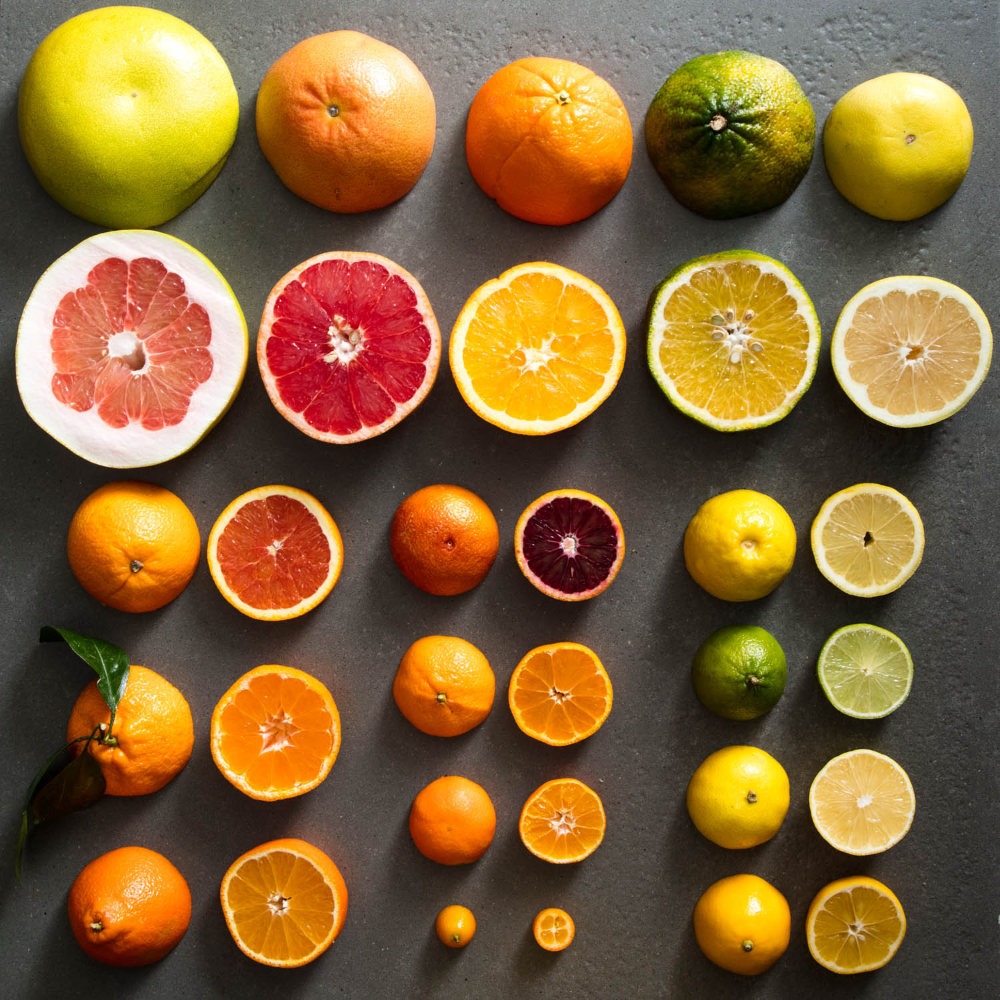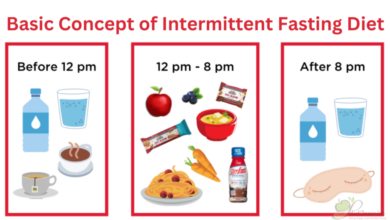
Everything You Need to Know About Citrus
Everything you need to know about citrus takes center stage, beckoning you into a world of zesty flavors, vibrant colors, and refreshing aromas. From the origins of these sun-kissed fruits to their diverse culinary and medicinal uses, we’ll explore the fascinating world of citrus, uncovering its rich history, nutritional value, and global impact.
Join me as we delve into the juicy details, uncovering everything from the science behind their growth to the art of incorporating them into your daily life.
Citrus fruits, a vibrant and diverse family of plants, have played a significant role in human history, contributing to both our culinary and medicinal traditions. From the tangy sweetness of lemons to the juicy bursts of oranges, each citrus fruit offers a unique flavor profile and a wealth of health benefits.
In this exploration, we’ll unravel the secrets of these beloved fruits, uncovering their botanical origins, nutritional prowess, and diverse applications in our modern world.
Introduction to Citrus Fruits
Citrus fruits are a beloved group of fruits known for their vibrant colors, refreshing flavors, and numerous health benefits. From the tangy lime to the sweet orange, citrus fruits have played a significant role in human history and culture, and their cultivation continues to thrive across the globe.
Botanical Classification of Citrus Fruits
Citrus fruits belong to the genus
-Citrus* within the family Rutaceae. The genus encompasses a diverse array of species and hybrids, all characterized by their unique combination of flavor, aroma, and nutritional properties. The most common citrus species include
- -Citrus sinensis* (Sweet orange)
- -Citrus limon* (Lemon)
- -Citrus reticulata* (Mandarin orange)
- -Citrus paradisi* (Grapefruit)
- -Citrus aurantifolia* (Lime)
History of Citrus Cultivation
The origins of citrus cultivation can be traced back to Southeast Asia, where wild citrus species are believed to have originated. Evidence suggests that citrus fruits were cultivated in China as early as 3,000 years ago. From there, citrus cultivation spread to other parts of Asia, the Middle East, and eventually to Europe and the Americas.
- The introduction of citrus fruits to Europe is attributed to the Arabs, who brought them to Spain during the Moorish rule in the 8th century.
- Citrus fruits quickly gained popularity in Europe, becoming a symbol of wealth and status.
- The cultivation of citrus fruits spread to the Americas with the arrival of European colonists in the 15th century.
- Today, citrus fruits are grown in over 100 countries worldwide, with significant production in countries like Brazil, China, the United States, and Spain.
Geographical Origins of Citrus Species
Citrus species have evolved in specific geographical regions, adapting to local climates and environmental conditions. Here are the origins of some common citrus species:
- -Citrus sinensis* (Sweet orange): Originated in Southeast Asia, likely in the region of present-day China and Vietnam.
- -Citrus limon* (Lemon): Believed to have originated in the northeastern part of India and subsequently spread to the Middle East and Europe.
- -Citrus reticulata* (Mandarin orange): Originated in Southeast Asia, likely in China.
- -Citrus paradisi* (Grapefruit): Originated in Barbados, likely as a hybrid between -Citrus maxima* (Pummelo) and -Citrus sinensis* (Sweet orange).
- -Citrus aurantifolia* (Lime): Originated in Southeast Asia, likely in India or Malaysia.
Types of Citrus Fruits: Everything You Need To Know About Citrus
Citrus fruits are a diverse group of flowering plants that belong to the genusCitrus* within the family Rutaceae. These fruits are a popular source of vitamins, minerals, and antioxidants, and they are enjoyed worldwide.
Classifying Citrus Fruits
Citrus fruits are often classified based on their unique characteristics, including flavor, aroma, and texture. The following table provides an overview of some of the most common citrus fruits:
| Citrus Fruit | Scientific Name | Origin | Key Characteristics |
|---|---|---|---|
| Sweet Orange | Citrus sinensis | Southeast Asia | Sweet, juicy, and aromatic with a vibrant orange color. |
| Mandarin Orange | Citrus reticulata | China | Small, easy-to-peel, and sweet with a delicate flavor and a loose skin. |
| Grapefruit | Citrus paradisi | Barbados | Large, tart, and juicy with a slightly bitter flavor and a pink or white flesh. |
| Lemon | Citrus limon | Southeast Asia | Small, acidic, and aromatic with a bright yellow color and a tart flavor. |
| Lime | Citrus aurantifolia | Southeast Asia | Small, acidic, and aromatic with a green color and a tangy flavor. |
| Tangerine | Citrus tangerina | China | Small, easy-to-peel, and sweet with a loose skin and a vibrant orange color. |
| Kumquat | Fortunella spp. | China | Small, oval-shaped, and sweet with a thin, edible rind and a slightly tart flavor. |
| Blood Orange | Citrus sinensis var. sanguinea | Italy | Sweet, juicy, and aromatic with a deep red flesh and a distinctive, slightly tart flavor. |
| Meyer Lemon | Citrus meyeri | China | Smaller than a regular lemon, with a thinner skin and a less acidic flavor. |
| Yuzu | Citrus junos | Japan | Small, bumpy, and aromatic with a tangy, citrusy flavor and a unique floral aroma. |
| Bergamot | Citrus bergamia | Italy | Small, pear-shaped, and aromatic with a distinctive, bitter-sweet flavor and a strong, floral aroma. |
Uses of Citrus Fruits
Citrus fruits are incredibly versatile and can be enjoyed in a variety of ways.
Culinary Uses
Citrus fruits are a popular ingredient in both sweet and savory dishes. They are often used to add flavor and zest to:* Desserts:Citrus fruits are used in cakes, pies, cookies, jams, and other desserts.
Beverages Citrus juices, such as orange juice and lemonade, are popular drinks. Citrus fruits are also used to flavor cocktails and mocktails.
Salads Citrus fruits add a bright and refreshing flavor to salads, and their juice can be used as a dressing.
Sauces
Citrus fruits are packed with vitamins, minerals, and antioxidants, making them a great addition to any healthy diet. They can be enjoyed in a variety of ways, from juicing to adding them to salads and desserts. If you’re looking to rediscover some lost healthy habits, incorporating citrus fruits into your routine can be a great place to start.
Check out these ways to rediscover lost healthy habits and see how easy it is to get back on track. From there, you can explore the world of citrus, learning about the different varieties, their nutritional benefits, and the best ways to enjoy them.
Marinades Citrus juices are used to marinate meat and poultry.
Other Uses
In addition to their culinary uses, citrus fruits have a variety of other applications:* Essential Oils:Citrus fruits are a source of essential oils, which are used in aromatherapy, perfumes, and cosmetics.
Medicinal Uses Citrus fruits are rich in antioxidants and have been used in traditional medicine for their health benefits.
Cleaning Products
Citrus fruits are a powerhouse of vitamins and antioxidants, but did you know they also offer a unique flavor profile that can elevate your dishes? From the tangy zest of lemons to the sweet juiciness of oranges, there’s a citrus fruit for every palate.
And just like mastering a new recipe, getting started with strength training can be equally rewarding. If you’re new to lifting weights, a good place to start is with a beginners guide to strength training to help you build a solid foundation.
With the right knowledge and dedication, you can reap the benefits of both – delicious citrus flavors and a strong, healthy body.
Nutritional Value of Citrus Fruits
Citrus fruits are not only delicious and refreshing but also packed with essential nutrients that contribute to overall health and well-being. They are a rich source of vitamins, minerals, and antioxidants, making them a valuable addition to a balanced diet.
Vitamins and Minerals
Citrus fruits are renowned for their high vitamin C content. Vitamin C is a powerful antioxidant that plays a crucial role in boosting the immune system, protecting against cell damage, and promoting collagen production. Other vitamins present in citrus fruits include folate, thiamin, riboflavin, and vitamin A.
- Vitamin C:A single orange provides about 70% of the daily recommended intake of vitamin C. This vitamin is essential for immune function, collagen synthesis, and antioxidant defense.
- Folate:Citrus fruits are a good source of folate, a B vitamin crucial for cell growth and development, particularly important during pregnancy.
- Thiamin:Thiamin is a B vitamin involved in energy metabolism and nerve function. Citrus fruits provide a moderate amount of thiamin.
- Riboflavin:Riboflavin is another B vitamin that plays a role in energy production and cell growth. Citrus fruits contribute to the daily intake of riboflavin.
- Vitamin A:Citrus fruits, particularly grapefruit, are a source of vitamin A, which is essential for vision, immune function, and cell growth.
Citrus fruits also contain various minerals, including potassium, calcium, magnesium, and phosphorus.
- Potassium:Citrus fruits are a good source of potassium, an essential mineral that helps regulate blood pressure and muscle function.
- Calcium:Citrus fruits provide a moderate amount of calcium, which is crucial for bone health and muscle function.
- Magnesium:Citrus fruits are a source of magnesium, a mineral involved in over 300 bodily processes, including muscle and nerve function, blood sugar control, and blood pressure regulation.
- Phosphorus:Citrus fruits contribute to the daily intake of phosphorus, a mineral essential for bone health, energy production, and cell function.
Antioxidants
Citrus fruits are rich in antioxidants, which help protect cells from damage caused by free radicals. The main antioxidants in citrus fruits are flavonoids, particularly hesperidin and naringenin.
- Hesperidin:Found primarily in oranges and lemons, hesperidin is an antioxidant that may help reduce inflammation and improve blood vessel health.
- Naringenin:This flavonoid, found in grapefruit, has been shown to have anti-inflammatory and anticancer properties.
Health Benefits
The abundant nutrients in citrus fruits provide numerous health benefits.
- Boosting Immunity:Vitamin C in citrus fruits is a potent immune system booster, helping the body fight off infections and illnesses.
- Protecting Against Chronic Diseases:Antioxidants in citrus fruits may help reduce the risk of chronic diseases such as heart disease, stroke, and certain types of cancer.
- Improving Skin Health:Vitamin C in citrus fruits promotes collagen production, which helps maintain skin elasticity and reduce wrinkles.
- Aiding Digestion:Citrus fruits are a good source of fiber, which promotes healthy digestion and prevents constipation.
- Supporting Weight Management:Citrus fruits are low in calories and high in fiber, which can help promote feelings of fullness and support weight management.
Contribution to a Balanced Diet
Citrus fruits are a versatile and nutritious addition to any diet. They can be enjoyed fresh, juiced, or incorporated into various dishes.
- Breakfast:Start your day with a glass of freshly squeezed orange juice or a bowl of fruit salad with citrus fruits.
- Snacks:Enjoy a handful of citrus segments or a citrus fruit salad as a healthy snack.
- Lunch and Dinner:Add citrus fruits to salads, stir-fries, or marinades for a burst of flavor and nutrients.
Growing Citrus Fruits
Growing citrus fruits can be a rewarding experience, bringing a burst of fresh flavor and vibrant color to your home. Whether you have a sunny backyard or a warm indoor space, cultivating these trees requires understanding their specific needs.
From the perfect zesty squeeze for your morning mimosa to the fragrant zest that elevates your favorite dishes, citrus fruits offer a world of flavor and versatility. And when it comes to cooking with citrus, a trusty Dutch oven is your best friend.
Whether you’re braising a succulent chicken with oranges or simmering a tangy tomato sauce with a hint of lemon, amazing things to do with a dutch oven can make your citrus-infused creations truly shine. So, grab your Dutch oven, stock up on lemons, limes, and oranges, and get ready to explore the vibrant world of citrus cooking.
Optimal Growing Conditions
Citrus trees thrive in warm, sunny climates with ample rainfall and well-drained soil. They prefer temperatures between 60°F and 85°F (15°C and 29°C), with protection from frost. Here’s a breakdown of their ideal growing conditions:
Climate
- Warm temperatures:Citrus trees are subtropical and require a frost-free climate. Temperatures below freezing can damage or kill the trees.
- Sunlight:Citrus trees need at least 6 hours of direct sunlight per day to produce fruit.
- Rainfall:Regular rainfall is beneficial for citrus trees, but they can tolerate some drought conditions.
Soil
- Well-drained:Citrus trees require soil that drains well to prevent root rot. Heavy clay soils can be amended with compost or sand to improve drainage.
- Slightly acidic:Citrus trees prefer a soil pH between 6.0 and 6.5. You can test your soil pH using a home kit and adjust it with lime or sulfur as needed.
- Nutrient-rich:Citrus trees benefit from fertile soil rich in organic matter. You can enrich your soil by adding compost, manure, or other organic amendments.
Water Requirements
- Regular watering:Citrus trees need regular watering, especially during dry periods. Water deeply and allow the soil to dry slightly between waterings.
- Avoid overwatering:Overwatering can lead to root rot. Check the soil moisture before watering to ensure it is dry.
- Mulch:Applying a layer of mulch around the base of the tree can help retain moisture and prevent weeds.
Planting Citrus Trees, Everything you need to know about citrus
- Choose the right location:Select a sunny spot with well-drained soil. Ensure the area is large enough to accommodate the tree’s mature size.
- Prepare the planting hole:Dig a hole twice as wide and as deep as the root ball. Amend the soil with compost or other organic matter.
- Plant the tree:Gently remove the tree from its container and loosen any circling roots. Place the tree in the hole, ensuring the graft union is above the soil line. Backfill the hole with soil, firming it gently around the roots.
- Water thoroughly:Water the tree deeply after planting to settle the soil and encourage root growth.
- Mulch:Apply a layer of mulch around the base of the tree to retain moisture and suppress weeds.
Caring for Citrus Trees
- Watering:Water regularly, especially during dry periods. Deep watering is more effective than frequent shallow watering.
- Fertilizing:Citrus trees require regular fertilization. Use a balanced fertilizer specifically formulated for citrus trees, following the manufacturer’s instructions.
- Pruning:Pruning is essential for shaping the tree and encouraging fruit production. Prune during the dormant season, removing dead, diseased, or crossing branches.
- Pest and disease control:Keep an eye out for common citrus pests and diseases. Use organic methods of control whenever possible, such as insecticidal soap or neem oil.
Preventing Citrus Tree Diseases and Pests
- Citrus Greening:This bacterial disease is spread by an insect called the Asian citrus psyllid. Symptoms include yellowing and distorted leaves, and fruit that remains green and bitter. There is no cure for citrus greening, but early detection and prompt action can help slow its spread.
- Citrus Canker:This bacterial disease causes cankers on leaves, stems, and fruit. Symptoms include brown, sunken lesions on leaves and fruit. Prevent citrus canker by planting disease-resistant varieties and practicing good sanitation.
- Scale Insects:These insects feed on plant sap, causing damage to leaves and fruit. Symptoms include sticky honeydew and sooty mold. Control scale insects with insecticidal soap or neem oil.
- Citrus Leafminer:These insects tunnel through leaves, causing damage and reducing photosynthesis. Control citrus leafminers with insecticidal soap or neem oil.
Uses of Citrus Fruits
Citrus fruits are a versatile ingredient that can be used in a variety of culinary applications. From sweet desserts to savory dishes, citrus fruits add a burst of flavor and aroma that can elevate any recipe.
Culinary Uses of Citrus Fruits
Citrus fruits are widely used in both sweet and savory dishes. Their unique flavor profiles and versatility make them a popular choice for chefs and home cooks alike.
Sweet Dishes
Citrus fruits are a staple ingredient in many sweet dishes. They are often used to add a tangy flavor to desserts such as cakes, pies, and cookies. For example, lemon juice is a common ingredient in lemon bars and lemon meringue pie, while orange zest is used to flavor orange cake and orange marmalade.
- Cakes and pastries:Lemon, orange, and lime zest are often added to cake batters and frostings for a citrusy flavor and aroma.
- Pies and tarts:Citrus fruits are commonly used in fillings for pies and tarts, such as lemon meringue pie, key lime pie, and orange cream pie.
- Cookies and candies:Citrus zest can be added to cookies and candies for a refreshing and tangy flavor.
- Jams and marmalades:Citrus fruits are essential for making jams and marmalades, which are made by cooking fruit with sugar and pectin.
Savory Dishes
Citrus fruits can also be used in savory dishes to add a bright and refreshing flavor. Lemon juice is a popular ingredient in marinades for chicken, fish, and tofu, while orange zest can be added to sauces for pasta and rice dishes.
- Marinades and sauces:Citrus juices, such as lemon, lime, and orange juice, are often used in marinades and sauces to add a tangy and refreshing flavor.
- Salads:Citrus fruits can be added to salads for a burst of flavor and color.
- Soups and stews:Citrus juices can be added to soups and stews to brighten the flavor and add a touch of acidity.
- Seafood dishes:Citrus fruits are often used in seafood dishes, such as lemon-herb grilled salmon or lime-marinated shrimp.
Citrus Fruits in Beverages
Citrus fruits are a popular ingredient in a variety of beverages, including juices, sodas, and cocktails.
- Juices:Citrus fruits are a popular source of juice, with orange juice being the most widely consumed.
- Sodas:Citrus flavors are commonly used in sodas, such as orange soda, lemon-lime soda, and grapefruit soda.
- Cocktails:Citrus juices are essential ingredients in many cocktails, such as margaritas, cosmopolitans, and daiquiris.
Citrus Fruits in Traditional Medicine and Aromatherapy
Citrus fruits have been used in traditional medicine and aromatherapy for centuries.
- Traditional Medicine:Citrus fruits have been used in traditional medicine for their purported health benefits. For example, lemon juice is believed to aid digestion, while orange peel is used to treat coughs and colds.
- Aromatherapy:Citrus essential oils, such as lemon, orange, and grapefruit oil, are commonly used in aromatherapy to promote relaxation, reduce stress, and improve mood.
Citrus Fruit Industry
The citrus fruit industry plays a significant role in the global economy, contributing to food security, livelihoods, and international trade. This industry involves the cultivation, processing, and distribution of citrus fruits, which are consumed worldwide for their nutritional value, flavor, and versatility.
Global Production and Trade
The global production of citrus fruits is substantial, with various countries contributing significantly to the market. Brazil is the leading producer of oranges, followed by China and the United States. Other major producers include India, Spain, Mexico, and Egypt. These countries account for a significant portion of global citrus production, supplying both domestic markets and international trade.
- The global trade of citrus fruits is extensive, with major exporters including Spain, Brazil, the United States, and South Africa. These countries export their produce to various destinations, including Europe, Asia, and North America. The trade of citrus fruits is influenced by factors such as seasonal availability, market demand, and transportation costs.
Major Citrus-Producing Countries
The citrus fruit industry is characterized by the presence of several major producing countries, each contributing significantly to the global market.
| Country | Major Citrus Fruit | Production (in Million Tonnes) |
|---|---|---|
| Brazil | Oranges | 25.0 |
| China | Oranges, Mandarins | 20.0 |
| United States | Oranges, Grapefruit | 10.0 |
| India | Oranges, Lemons | 8.0 |
| Spain | Oranges, Clementines | 7.0 |
Challenges and Opportunities
The citrus fruit industry faces several challenges, including climate change, pest and disease outbreaks, and market fluctuations. However, there are also opportunities for growth and innovation.
- Climate change poses a significant threat to citrus production, as rising temperatures and extreme weather events can impact yields and fruit quality. For example, the citrus greening disease (Huanglongbing), a devastating bacterial disease, has spread to various citrus-producing regions, resulting in significant losses.
However, advancements in pest management, disease control, and drought-resistant varieties offer potential solutions.
- Market fluctuations, influenced by factors such as global demand, supply, and trade policies, can impact the profitability of citrus producers. However, opportunities exist for diversification, value-added processing, and exploring new markets to mitigate these challenges.
Final Review

As we conclude our journey through the citrus world, we’re left with a newfound appreciation for these versatile fruits. From their ancient origins to their modern-day uses, citrus fruits continue to captivate our senses and nourish our bodies. Whether you’re seeking a burst of flavor in your cuisine, a boost of vitamins and antioxidants, or simply a refreshing way to enhance your daily routine, citrus fruits offer a delightful and healthy option.
So, embrace the zesty goodness, explore the endless possibilities, and let citrus brighten your life in every way.






